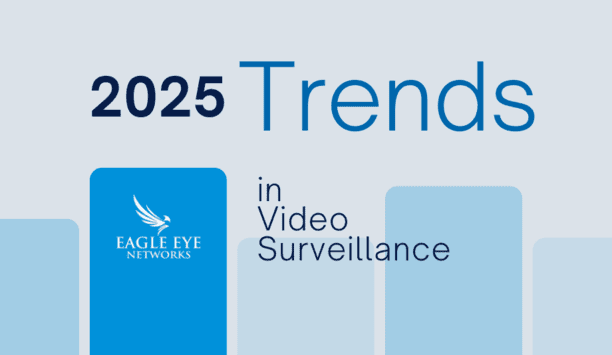CriticalArc - Experts & Thought Leaders
Latest CriticalArc news & announcements
The Association of University Chief Security Officers (AUCSO), the pioneering organisation for security professionals working in higher and further education around the world, is delighted to announce that it will be awarding Les Allan, former Chair of AUCSO, a Fellowship. Les was AUCSO’s Chair between 2021 and 2023, and Vice Chair between 2019 and 2021. Recently retired from his role as Director of Safeguarding Services at Heriot-Watt University, Edinburgh, Les now works as a consultant for one of AUCSO’s partners, CriticalArc, the pioneering Safety, Security, Wellbeing and Emergency Management Solution company. Use of innovative technology AUCSO’s current Chair, Oliver Curran, commented: “We are honoured to present Les with this award as he has worked tirelessly for AUCSO for many years and been pivotal in shaping the direction of the Association. We wanted to recognise the outstanding contribution he has made over this period." “Throughout his time with AUCSO, Les has always actively promoted the sharing of best practice across the wider security sector, creating strategic alliances and encouraging collaboration and consultation with government and regulatory agencies. He championed the use of innovative technology to enhance the reach of security provision and acted as a mentor to those just beginning their leadership careers, actively investing in the next generation of professionals working towards career progression. We are truly grateful for everything he has done.” Prior roles of Les Les is only the seventh AUCSO Fellow, joining Alfred Feichtinger, the first European Region Chair Julie Barker, COO at AUCSO added: “Les really does deserve this Fellowship. I have always admired his capability, as an experienced and inspirational pioneer, to develop new approaches to modernise security and safety by breaking down barriers to collaborative thinking and using his influence to support new initiatives and strategic alliances. He is one in a million!” Les is only the seventh AUCSO Fellow, joining Alfred Feichtinger, the first European Region Chair, Bernadette Duncan MBE, Chair 2001/2002, Ray Wheatley, Current Ireland Region Chair, David Owen, Secretary 2000-2017, Brian Scofield, Treasurer 2015-2019 and Trevor Jones, Chair 2018-2021, and Vice Chair 2015-2018. AUCSO Awards ceremony Les commented: “I’m proud and delighted to have been bestowed this honour and to be in such great company makes it even more special.” Les will be formally presented with the honour of being appointed a Fellow at the AUCSO Awards ceremony which will take place in April as part of the AUCSO Conference.
The official awards of publications Fire Safety Matters and Security Matters, the "FSM Awards," took place yesterday evening at the Coventry Building Society Arena. Established to promote innovation and the highest standards of excellence, NSI approved companies were well represented amongst the finalists and winners. NSI congratulates all the winners and finalists amongst whom 10 NSI approved companies were shortlisted as finalists with 28 nominations between them, of whom six took home the top prizes in the following categories: Security Guarding Company of the Year: Securigroup Security Installation Company of the Year: Securitas Technology Fire Safety Installation Company of the Year: Frocester Fire & Security Security Project of the Year: Chubb UK with CriticalArc and Kent NHS Community Healthcare Trust Security Industry Woman of the Year: Samantha Norman from Mitie Fire Industry Woman of the Year: Chloe Vickery from JLA Fire and Security Ltd Author's quote Richard Fogelman NSI Chief Executive commented: “We send our warmest congratulations to all the winners and finalists of this year’s FSM Awards, whose valuable contribution in making the UK a safer place is worthy of recognition. Their achievements epitomise why the private security and fire sectors are critical in keeping people, property and places safe 24/7, 365 days a year. We commend them all and wish them well in their future endeavours.”
Chubb Fire and Security, one of the life safety service providers is this week attending the Annual SafeZone EMEA Conference taking place in Birmingham, UK. The award-winning event connects business pioneers with experts like Chubb, to share innovation, best practices and how they operate with SafeZone solutions. Chubb has partnered with CriticalArc on the SafeZone application since 2021. Forming part of Chubb visiON+ offering of connect safety services, SafeZone powered by Chubb combines an emergency management solution with Chubb expert team and 24/7 monitoring. Security response teams The integrated service is suitable for all organisations, whether their staff are travelling, working on site alone, commuting or within a hybrid structure. Companies without security response teams can rely on Chubb monitoring teams for direct management, advice and assistance during crisis, wherever they are. This has been particularly relevant in the healthcare and education sectors, where Chubb and CriticalArc have already provided essential security support. SafeZone is already in place at the Kent Community Health NHS Foundation Trust SafeZone is already in place at the Kent Community Health NHS Foundation Trust, where its use has reduced costs and enabled the establishment of a much more powerful infrastructure, now that the lone worker function is in place. The technology was acquired through the UK Government Cloud 12 Framework and is being delivered in partnership with Chubb UK. Rapid emergency assistance The service will help provide rapid emergency assistance for the trust’s staff, with specialist help available regardless of the user’s location, with SafeZone pinpointing checked-in users and enabling control room operators to coordinate faster responses. Chubb’s 24/7 lone worker alarm receiving centre will ensure seamless monitoring and support at night, maintaining uninterrupted response even when the trust’s in-house security team isn’t available, the organisation explains. Chubb’s trained team of operators will provide advice for staff requesting help and contact the police as needed. The trust is also supported in this venture by Kent Police, developing their existing well-positioned and collaborative working partnership. Access specialist advisors SafeZone will also provide opportunities for staff to leave push messages SafeZone is also expected to improve communication and coordination between care teams and their team leaders. Encrypted communication for the teams and their members will allow the trust to develop communications between teams within the same directorate, and to access specialist advisors when required. SafeZone will also provide opportunities for staff to leave push messages and report low level incidents to specialist advisors and this is a direction the trust security team is keen to explore. Best practice solutions Frederic Peyrot, Customer Innovation and Solutions Director at Chubb said: “We are delighted to be attending the SafeZone conference in the UK as a strategic partner for SafeZone. The conference provides an excellent platform for industry leaders to connect and share best practice solutions for employee security.” He adds, “The SafeZone solutions, produced by CriticalArc and developed in collaboration with Chubb, are revolutionising worker safety in critical sectors like healthcare and education where business continuity has a meaningful societal benefit. We look forward to continuing to work closely with the CriticalArc team to expand the offering.”
Insights & Opinions from thought leaders at CriticalArc
There’s only so much a corporation can do to counteract the threat of a major incident. You can ask everyone to be vigilant and to report anything suspicious, but you cannot stop someone intent on deliberately starting a fire, threatening a work colleague with a knife or something much worse. And of course, most businesses recognise that even routine events – such as burst pipes, IT system failures, extreme weather event or power outages – can have significant consequences unless they are quickly brought under control. Training security officers Governments and organisations across the world are increasingly encouraging businesses to re-assess risks and to plan for and conduct drills for major emergencies. This is driving different agencies and companies to invest in new skills, resources and systems, and encouraging businesses to routinely re-evaluate their emergency response strategies. UK police forces are increasingly training security officers in the public and private sectors on how best to react to potential terrorist incidents For example: UK police forces are increasingly training security officers in the public and private sectors on how best to react to potential terrorist incidents, as part of the UK government’s Action Counter Terrorism programme. And organisations including the Association of University Chief Security Officers (AUCSO) and Higher Education Business Continuity Network (HEBCoN) are developing customised training for their members to improve their own response and business continuity plans. Mass notifications systems Whether an organisation is facing a terrorist attack or a severe weather event, follow up reports consistently identify that the same types of challenges are common to all crisis situations, with similar errors often occurring again and again. Typically, these are centred on three key areas: poor communications, fractured command and control structures, and delayed deployment of resources. Communications skills and technologies clearly play a pivotal role in how effective an organisation is in responding to major incidents, particularly when it comes to assessing the situation and its implications, moving people towards safety and providing updates as an incident unfolds. However, when an organisation is considering its technology options, emergency response and mass notification systems (MNS) are often touted as the ideal platform to deliver all the required critical communications and ongoing updates. UK police forces are increasingly training security officers in the public and private sectors on how best to react to potential terrorist incidents Emergency notification system All the incident reporting, command and control, and communications functions have been brought together on a single platform But, if an organisation does not know exactly where all its staff or students are, and it cannot see the location and availability of its first responders and other emergency coordinators relative to them and the incident, then how useful is it to send a top-down alert to everyone? And what about fast moving or multi-centre incidents, where previously agreed evacuation procedures, recommended actions or mustering points may need to change if an incident takes an unexpected turn? Many organisations may have been lulled into believing that an emergency notification system will allow them to confidently handle all the communications aspects of virtually any crisis. In reality, too many businesses are still unaware that there are now much more sophisticated and proven technologies where all the incident reporting, command and control, and communications functions have been brought together on a single platform. Using live map tracking The benefit of using these advanced and more integrated approaches – often categorised as mobile distributed command and control systems – is that they enable faster and better decision making in a crisis using real-time feedback and two-way dialogue with those closest to the emergency. And they avoid the risks of any potential delays, miscommunications or mistakes that can happen when an organisation is under pressure to respond and often switching between multiple systems. Leading universities and multi-national corporations are already using new mobile/web-enabled platforms to improve their incident response These next generation emergency management platforms have been specifically designed to enable real-time mapping of an organisation’s security assets and its users on a single screen and to fully integrate it with a highly targeted geo-fenced notification capability. The mass notification aspect of the system can then be used to advise specific groups on the best actions to take at their location as an incident develops. The use of live map tracking enables real time mapping of an organisation's security assets Segmented messaging Many leading universities and multi-national corporations are already using these new mobile/web-enabled platforms to plan, manage and improve their incident response, leading to 50% faster reactions and more positive outcomes.During a crisis, users can receive push notifications so the security centre can immediately see their exact location and advise them accordingly The systems have been widely adopted within the higher-education sector, but they are equally applicable to any large company with multiple international sites or those situated in research or corporate campuses where the bulk of assets and people are based in one or more key locations. Typically, systems provide users with a smartphone app that they can use to call for immediate emergency or first aid support when at work, or to report something suspicious which could prevent an apparently minor incident from escalating into a full-scale emergency. During a crisis, users can receive push notifications, SMS and E-mails asking them to open the app if they are not already logged in, so the security centre can immediately see their exact location and advise them accordingly. Supporting dispersed mustering Now that communications can be more nimble, responsive and flexible this can support the increasing numbers of planners are recognising the advantages of dispersed mustering. This is a strategy that has been developed to reduce the risk of secondary attacks on unprotected people complying with instructions to evacuate from premises and gather in what are, effectively, exposed locations. It is now acknowledged that evacuees waiting outside for any length of time are more vulnerable to targeted attacks or to injury, from flying glass for example. With dispersed mustering – a strategy made more effective by these new mobile distributed command and control systems - a building’s occupants can be advised not to go outside, but to move to known safe internal locations. People in each specific area can then be kept regularly updated. Many corporations are now using new mobile/web-enabled platforms to improve their incident response Coordination between response agencies The software platforms can be integrated with an organisation’s fixed security infrastructure to take real-time sharing of information First responders are permanently logged in, so the emergency operations centre can see their exact locations in real-time and can advise what actions to take in mustering people or in setting up and protecting security cordons. Bringing everything together on one platform, with real-time feedback and in a fully integrated system also removes what is often seen as the weakest communication link in managing any major incident: the need to rely on conventional two-way radio as the sole means of communication between the command and control centre and its first responders and other team members on the ground. The software platforms can be integrated with an organisation’s fixed security infrastructure to take real-time sharing of information to a new level for improved collaboration, coordination and communications between users, the incident management team and external agencies. Improving emergency response strategies One of the most powerful features of some of these new systems is the ability to record and view all alerts, responses and the detailed conversations between first responders, emergency coordinators and other parties. This allows the systems to be used to simulate major incidents involving inputs from the emergency services and other key agencies and to ensure the organisation’s crisis management plans have been fully tested against a range of possible incident scenarios.
A modern guide to data loss prevention
Download7 proven solutions for law enforcement key control and asset management
DownloadSecurity practices for hotels
Download2025 Trends in video surveillance
DownloadMaximising security and performance
Download
















